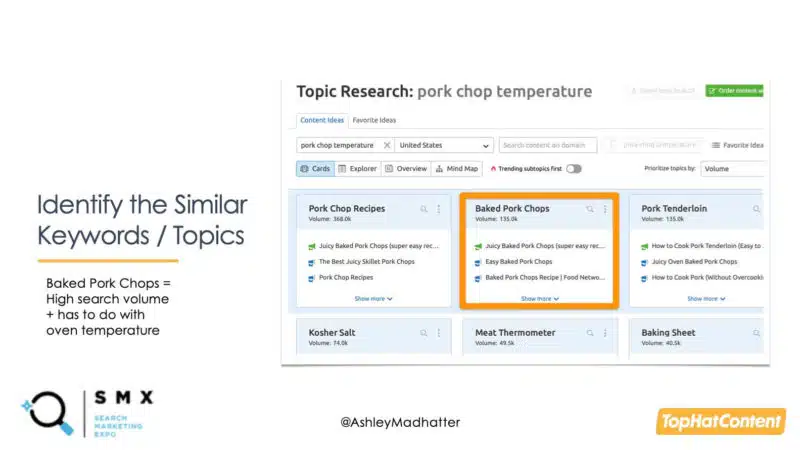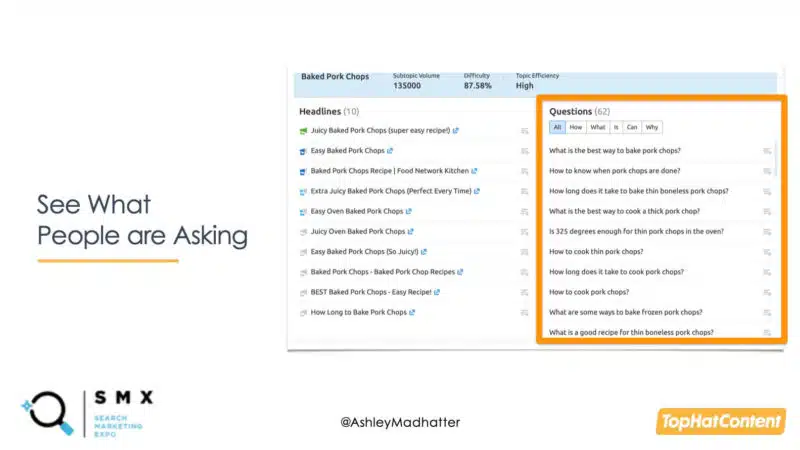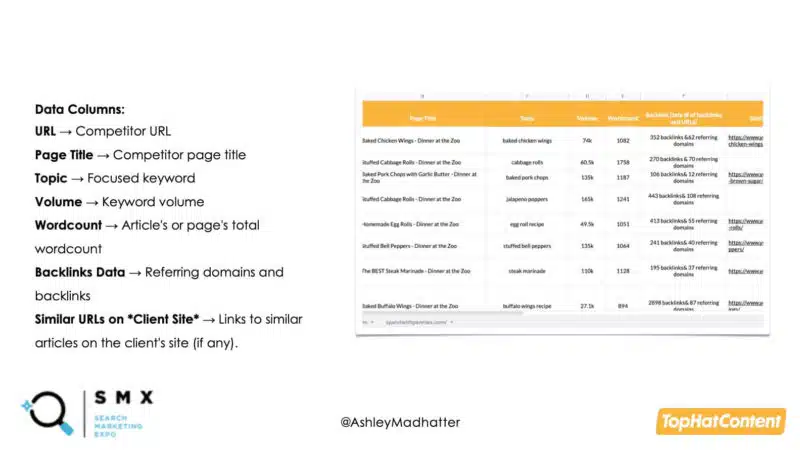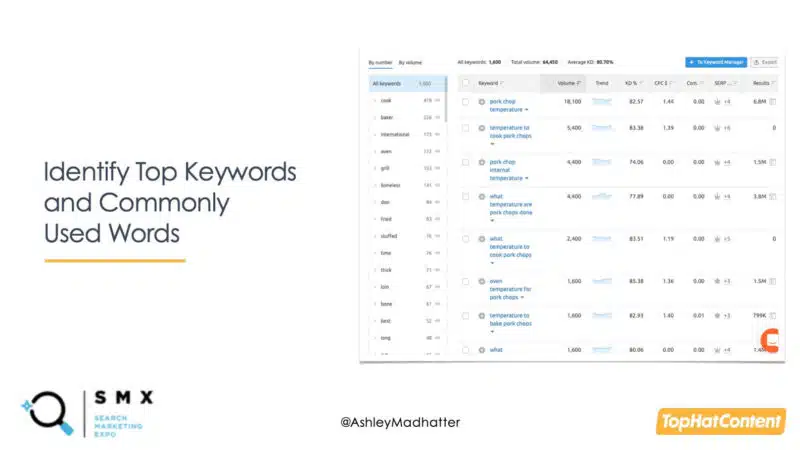4 ways data analysis can help you generate new ideas and optimize your content
If your competitors outrank you, there’s probably a good reason for it. At SMX Next, Ashley Segura shared how she uses data analysis to discover those reasons, along with fresh content ideas that can help you close the gap.
Generating new content ideas can become quite difficult as a brand blog or publication matures. While many search marketers already use keyword tools to identify what kind of content their audience is looking for, taking that process a step further by using tools to analyze what users are asking, along with your competitors’ content, can help you unlock fresh topics.
At SMX Next, Ashley Segura, co-founder of TopHatContent, shared how she uses data analysis to generate content topics, uncover ways to improve existing content and identify the factors behind why your competitors may be outranking you so that you can close the gap.
Perform a content gap analysis
“This is going to show you where your current content is really missing the mark and you do this through looking at a competitor,” Segura said. While there are many ways to perform this, with various tools, Segura used Semrush’s keyword gap tool in her examples.
To start, marketers should put three to five different competitors into the keyword/content gap tool of their choice to see what their competitors are ranking for that they could also potentially be ranking for as well, or to identify content that they’re currently missing out on.

Exporting this data into a Google Sheet can enable you to filter out the data you don’t need (such as branded keywords) and zoom in on more relevant details, like search volume.
“We’re really looking for keywords that the competitors are ranking for within the top two to five pages of SERPs [search engine results pages],” she said, “Those are the ones that have opportunity to where you can come in with a new piece of content and outrank them.”
When identifying content opportunities this way, marketers should keep in mind that the “The perfect mix is high [search] volume with a low keyword density score,” Segura said.
Explore your content topics based on what users are asking
“It’s one thing to use the data to come up with topic ideas,” Segura said, “That’s a great place to start, but then you need to use the data to make sure you’re covering everything there is to know about that topic.”
Using a topic research tool (Segura used Semrush’s tool for her examples), marketers can identify angles they can use to approach the content.

The topic research tool will populate cards with similar keywords that have to do with your topic. In the case of Semrush’s tool, the “Questions” section of the card shows what users are asking with regard to the keyword in question.

“This [information] is great when you’re trying to figure out what information you need to include in this new piece of content,” Segura said, adding that these questions may also give you more content ideas as well.
The next step is to see what has already been published. If you’re using Semrush’s tool, the Headlines section can show you the top 10 articles that are ranking for that keyword. You can also perform a search (on Google or Bing, for example) and analyze the results pages as well.
Analyzing the headlines can reveal patterns you might want to follow with your own content. “If three out of ten of the headlines have this word, ‘juicy,’ added to it, there’s a reason it’s ranking well,” she provided as an example, “So by adding this specific adjective, people are going to be more likely to click on your piece of content and it’s safe to assume that because it worked for these top-ten pieces.”
In addition to looking at competitors’ headlines, it’s wise to evaluate their formatting, use of imagery and videos and structure as well. What you observe can then be used to inform your own content and optimizations.
Perform a competitor content analysis
A competitor content analysis can help you go beyond what’s on their pages to explain their content success.

Using the tool of your choice, Segura recommends pulling the data from your competitors’ top 10 to 15 pieces of content and then adding them to a dedicated spreadsheet to consolidate the relevant information.
“You’re looking at the competitor URL [and] the page title. What’s the focused keyword? What’s the keywords volume? How long was the piece of content? What kind of backlinks did they get?” she said, recommending that marketers add dedicated columns in their spreadsheet for that information.
“One of the most important things is whether there’s a similar URL,” she added, “Basically, is there a similar piece of content published on our client or brand site already? Is there something to where we’re literally competing with them on this topic?”
Using the information you’ve compiled, create a recommendations column in your spreadsheet and then add actionable insights to it so that you and your stakeholders have an idea of how to move forward with that particular piece of content. Doing this across your competitors’ content can help you fill out your editorial calendar.
Use data to structure your content
Keyword analysis tools can also be used to bolster your content by helping you identify topics that your audience may be asking about. Sometimes these topics can be their own standalone article, but when they’re not quite dense enough, you can create headings within your related content to address them, Segura recommended.

“You also want to identify top keywords and commonly used words that are relevant to [your topic],” she said, noting that marketers should only do this when the secondary keywords support the main keyword. Jump links can also be used to improve your UX by allowing users to navigate directly to the sections that are most relevant for them, she added.
Your competitors’ strengths can also be your strengths
“Because your competitors are outranking you, because they’re getting great traffic for [their content], there’s a reason behind that and it could be because you’re missing valuable pieces of information,” Segura said. Evaluating their content to identify what those missing pieces are can help you close the gap and repeating these audits on a regular basis can help to ensure that your content remains relevant.
Watch the full SMX Next presentation here (free registration required).
Contributing authors are invited to create content for Search Engine Land and are chosen for their expertise and contribution to the search community. Our contributors work under the oversight of the editorial staff and contributions are checked for quality and relevance to our readers. The opinions they express are their own.
Related stories